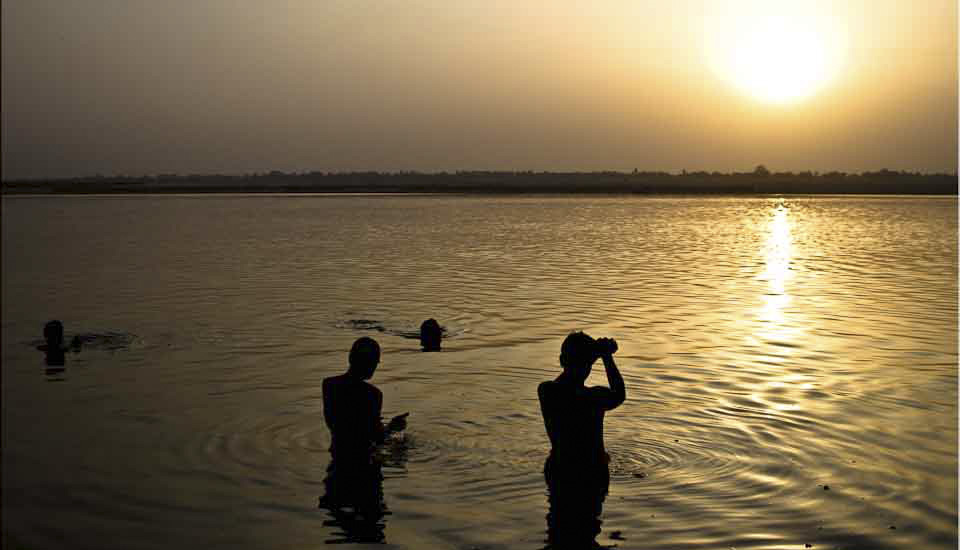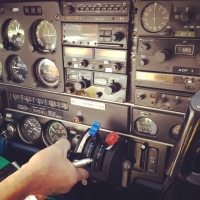.jpg)
Ferns on the Forest Floor
With the tops of the cedar, spruce, and hemlock trees high overhead, and their branches filtering the the light that reaches the ground, it is moist and dark on the floor of this magnificent temperate rainforest. The walk around Spirit Lake, near Skidegate in Haida Gwaii, Canada, is a magical introduction to this very special archipelago off the northern Pacific Coast of British Columbia.
There is something very special about Haida Gwaii.
It might be the fresh air and abundance of old-growth and second-growth forests; it might be knowing that the Indigenous people here have spiritual and family connections to the land going back more than 13,000 years; it might be the breathtaking natural beauty.
Whatever it is, these beguiling islands in the Pacific, off the northern coast of British Columbia (BC), Canada, feel magical and timeless.
I had been waiting a long time to visit: getting to Haida Gwaii is not particularly easy or cheap.
There are flights – but then you probably need to rent a car: getting around the islands without a vehicle is pretty difficult.
Most people arrive – as I did – by ferry from the northern BC city of Prince Rupert (see: Local History in Wood and Water). That is nominally an approximately 7 or 8 hour crossing. However, the wide but shallow waters of Hecate Strait can make for a rough passage and the crossing is weather-dependent. The day I was scheduled to travel, the ferry departure was delayed by 12 hours because of high winds. I arrived into Skidegate on Graham Island, the northern of Haida Gwaii’s two principle islands, well after midnight.
When I was growing up, these were known as the Queen Charlotte Islands: this was the name given to them by Captain George Dixon from the United Kingdom in 1787. At the time of Dixon’s maritime explorations, about 30,000 Haida people lived in villages across the islands, which they called Xaadala Gwayee, or “islands at the boundary of the world”.
The current name, Haida Gwaii – meaning islands of the people in the Haida language – was legally granted in 2010 to recognize the history of the people – who, thanks to smallpox and other diseases, had dwindled to only 350 individuals by 1900, and who – thanks to Government and Church policies, lost much of their language and culture.
Today, Indigenous Haida make up about 45% of the 4500 people on the islands, mostly in the two main communities at Skidegate and Old Massett.
Their numbers might be small, but their connection to the place and to their own history within it is palpable.
Having finally arrived, I couldn’t wait to explore. But, tired from the challenge of the crossing the night before, I wanted to stay reasonably close to my accommodation in Daajing Giids – the ancestral name of what had only the month before been known as Queen Charlotte City.
I started with an easy afternoon walk around Spirit Lake in Skidegate Village.
.jpg)
Entry Gate
Haida are renowned artist and carvers: their designs are seen everywhere – including on Canadian money. Here, at the entrance to Spirit Lake, we meet Wasco, the Sea Wolf – subject of a local myth. (iPhone12Pro)
.jpg)
Western Skunk Cabbage – Lysichiton Americanus
The forest trails are dark and the ground is moist: the perfect environment for skunk cabbage, which loves the swamps and other wet areas in the Pacific Northwest woods. Fortunately, it is not currently in bloom, so the acrid odor is mild.

Western Sword Fern – Polystichum Munitum
Ferns also love the shade, and grow profusely in the detrus at the base of the trees.

Walkers in the Woods
It is still shoulder season: spring is drawing itself out with cool and rainy weather. I don’t see many other walkers on my circuit.

Splendid Feather Moss – Hylocomium Splendens
Every fallen tree and every patch of leaf litter has a complex world of vegetation growing on it.

Lanky Moss – Rhytidiadelphus Loreus
Some of the mosses even attach to upright tree trunks.

The Path
I love these western forests – with their tall straight tree trunks stretching high to the sky.

Waterfall
Water runs everywhere through here, under fallen tree trunks …

Wood in the Water
… and past cut stumps and logs.

Nature’s Sculptures: Ferns on the Tree Trunks

False Lily of the Valley
According to Wikipedia, Native Americans used this plant to treat wounds and eyestrain.

A Bend in the Path
It’s a winding, twisty path through the trees.

Black Slug – Arion Ater
Not my favourite creatures – but prolific in this wet climate.

Bunchberry Dogwood – Cornus Canadensis
These cheerful and abundant ground-covers always make me smile.

Tree Trunks
The girth of these trees gives some indication of their great height.

Draping Cedars

Cedar over the Path
As trees reach for the light, they encroach on the narrow walkways.

Fallen Trees and Waterways
Every shade of green is represented in the layers of growth.

Culturally Modified Tree
Some of the trees have sections of bark – or even chunks of wood – removed for use in traditional practices. This is done in a way that allows the tree to continue its healthy growth.

Spirit Lake
The lake comes into sight and the path takes me around it.

Fallen Logs on Spirit Lake
Actually, it is two lakes – but unless you are looking at a map, that isn’t obvious.

Carved Tree Trunks

Leading Lines
After looping the lakes, I walk back into the tall trees, …

Small Bridge
… and back over the little wooden bridges. The afternoon light is fading as I return to my car.
 The pictures do not really do the magic of the forest justice.
The pictures do not really do the magic of the forest justice.
Maybe it was the fatigue, but I felt quite emotional walking the track, and I could have sworn the trees were talking to me.
Perhaps they were.
Until next time!
Pictures: 10June2022





























.png)

